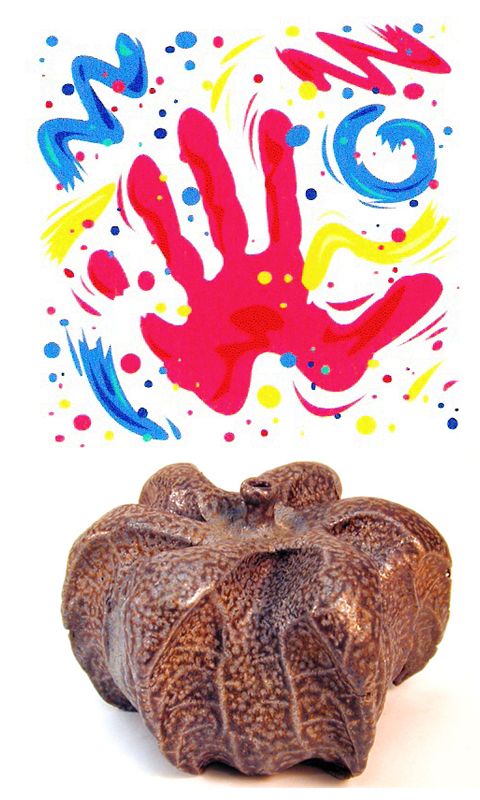More to it
While I understand the idea that anyone can play in clay, as it is usually first introduced to those in kindergartens in order to make hand prints, paper weights or the dreaded pinch pot, I need to point out a few obvious things. Any art medium anyone can do doesn’t make it easy, it just makes it accessible. There is the fact that one needs to do said art well and bring some sort of artistry to it as well. Also, if the concept of “if a child can do it, then it is a craft” is why people feel that clay is lowly, then painting should be tossed right on in there, as that is also one of those pesky “arts/crafts” that those schools also bring in for children to experiment with (i.e. see water color sets, acrylic painting and finger painting to name a few).
So, let’s say clays bad wrap for “being easy” and “a craft” didn’t come from five year olds… where did it come from then? Maybe because most people use a type of ceramic or have touched clay (in one form or another) throughout their lives, so because it’s so readily available, it must be easy to make? I’m not sure if this is a valid concept either because the making of most items we use in today’s market (like those in plates and ceramic mugs at say Target or even at the 99 cent stores) are not handmade and are far from easy to make. Most companies have industrialized the process of making these items, using machinery in order to make the millions of pieces that have to churn out. Tiles are mixed, rolled out, cut and dried in a way that they don’t warp (do most people even know that standard clays will do that without understanding the nature of clay?) or crack. Smaller potteries may make the molds for a cup (let’s use an example) and hand pour slip into the pieces, then remove the molds, sand them, fire and then decorate… but none of what any of these companies do is “simple,” “easy” or “what a child can do.” These concepts are all things that take education and time to understand how to do it and then, experience in order to do it correctly.

Pinch pot featured above was from Clayton Bailey, GOURD-LIKE PINCH POT- 1963
8" X 8" X 5", salt glazed stoneware. The finger painting above was off the Mamaleche Blog.
Perhaps it’s because the most experienced potters make throwing and working in clay look so effortless? I have seen so many demos at Festivals and Fairs of some fantastic ceramic artists over the years. Seeing a teapot or a vase thrown in less than five minutes is pretty amazing. I’ve demoed as well at the Strawberry Festival, as well as in Downtown Ventura, Main Street Santa Paula, and at numerous SCA events. Maybe people think that because the art is such a messy one, and an ancient, grass roots sort of art form (i.e. folk art), that anyone can just jump right on so it’s easy.
Here is a video of a Chinese potter making "teabowls", throwing off the hump. Not an easy thing. Watch how fast he is.
I don’t want to discourage people because I believe that anyone can do anything if they put their mind to it. However, clay work is not for everyone. Throwing on the wheel is especially one of the most frustrating and most joyful things at the same time. Some people take to the wheel right away and others have to work pretty hard to get it going. There have been many who I’ve known that have never gotten the wheel. When you first start on the wheel and you get something that doesn’t collapse… I can’t tell you how awesome that feeling is.
The disappointment in this field when you accidentally overwork your piece or it just doesn’t survive all the various stages of working it (decorating, drying, bisque to glazing) is an experience only another clay worker can really understand. As far as I know, no other art form is as fragile or as unpredictable like this. There is less randomness, as you understand the chemical reactions of the clay and chemicals used. There are so many factors involved in a piece from the medium itself (clay), to the glaze (if you use one) to the firing (how it’s being fired and how hot) to what else is in the kiln (other pieces being fired – i.e. kiln environment). Not only do you have to be a sculptor but also you have to understand surface decoration, composition and chemistry. It has to be beautiful or pleasing. Sometimes it has to be functional. Does this sound “simple” or “easy” to you?
So, I ask you… why is this a craft and not an art form? I don’t understand… to me, it’s an art form. Your opinion?
Labels: ceramics, clay, clay as an art


<< Home